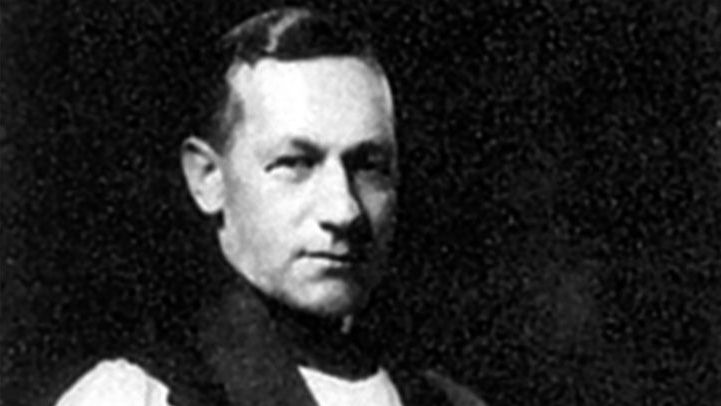All Saints’ Day: The Everyday Saints That Live Among Us

Who do we consider as saints and why? Sean McConnell, Senior Director for Engagement at Episcopal Relief & Development, shares how he came up with his personal and inclusive definition as a result of his own spiritual journey, inviting readers to discern what’s meaningful to them when considering the faithful and venerated…
As I have written before, I’m a huge fan of the three days that make up the celebration of those who have died in the faith: All Hallows Eve, the Feast of All Saints and All Souls Day (or as I call them Las Dias de los Muertos). I must admit, however, that I’ve always been a bit conflicted about All Saints’ Day, as it tends to be for those who are recognized by the Church to be saints, and not for the souls we know deep in our hearts to be saintly and worthy of God’s eternal reward.
There are people I have known, now dead, who have provided living examples of how to follow Jesus. Why shouldn’t I celebrate them today? There are people I have learned about in history, who, although their lives were filled with very human struggles, nonetheless aimed at achieving God’s purpose for them. Dr. Martin Luther King, Jr. is one example.

Martin Luther King Jr. (1929 – 1968) was an American Baptist minister and activist who became the most visible spokesperson and leader in the civil rights movement.
Claiming their own saints
If you look up into the rotunda of St. Gregory of Nyssa in San Francisco, they have claimed their own saints in a beautiful dancing icon. The icon does include those we recognize as saints: Francis of Assisi, Teresa of Avila, St. Paul. They also include some whose lives they recognize as pointing toward God, or at least in helping the world achieve God’s dream for the world, like: Desmond Tutu, Anne Frank, Charles Wesley, Gandhi and Sojourner Truth.
Dancing Saints from Episcopal Relief & Development on Vimeo.
They might not all be canonized, but the people of St. Gregory’s, as a community of faith, joined together to say that these “saints” are guideposts for them in their lives. They are saints that help them, by example, to focus their own lives on God.
The Episcopal Calendar: Commemorating diversity
This is why I admire recent efforts in the Episcopal Church that seek to make additions into the Church calendar; that is, to include names of many people who have been examples to us of what it means to follow Jesus.
In the introduction to “A Great Cloud of Witnesses: A Calendar of Commemorations” for the Episcopal Church (Church Publishing, New York. 2016), there is a wonderful overview of why and who we commemorate in the calendar of the Church year. Some are officially designated as saints, and some are members of our Christian family. Both are present in our calendar to honor the different theological and spiritual opinions held across the breadth of the Church.

Molly Brant (c. 1736 – 1796, Mohawk) was a Loyalist during the American Revolutionary War. Known to have been a devout Anglican, she is commemorated on the calendar of the Anglican Church of Canada and the Episcopal Church (USA).
A family history
But it is the idea of the list of commemorations in “A Great Cloud of Witnesses” being presented as a “family history” that I find most attractive.
“…local communities operated on a broad basic principle: that Christ was known more intimately through these individuals, and that the holiness of the person was both evidence of their participation in the greater life of God and an inspiration for those around them to “go and do likewise.”” [A Great Cloud of Witnesses, xi]
“A Great Cloud of Witnesses” includes saints like Elizabeth Seton who founded the Sisters of Charity; Julia Chester Emery who started the United Thank Offering; Andrei Rublev, the monk and icon writer; Samuel Shoemaker, co-founder of Alcoholics Anonymous; Absalom Jones, a freed slave who became a priest and founded the African Episcopal Church of St. Thomas; and Bishop Paul Jones who was vilified for his pacifism, renowned for his struggles for human rights, and instrumental in the founding of the Presiding Bishop’s Fund for World Relief (now known as Episcopal Relief & Development).

Bishop Paul Jones
Living members of the Jesus Movement
Even though it is a historically recent movement to expand our understanding of saints, I would argue that it is has its roots much further back. St. Paul frequently referred to the living members of the Jesus Movement in his day as “the Saints.” They were the ones, who by their living examples, oriented others toward the Divine.
That is one of the reasons I love working for this organization. I am continuously surrounded by those who strive to achieve God’s dream for the world. So, on these three days when we commemorate those who have died, I invite you to reflect on those you have known who have shown saintly compassion, as well as the living who continue to help you aim your life and purpose towards God. Remember their lives and examples, then go and do likewise.
Do you know any living saints that deserve to be recognized? Who is your favorite saint and why? How do you typically celebrate All Hallows’ Eve, All Saints’ Day, and All Souls’ Day? Leave your comments on our Facebook, Twitter, or Instagram accounts!
Featured image: Saint Perpetua and Felicity (believed to have died in 203 AD) were Christian martyrs of the 3rd century. Vibia Perpetua was a married noblewoman, said to have been 22 years old at the time of her death, and mother of an infant she was nursing. Felicity, a slave imprisoned with her and pregnant at the time, was martyred with her.
Related Reading
Andrew Maxwell, One of the Saints of God
All Saints’ Day: Lessons from our Grandparents
Celebrating Great Triumph on All Saints’ Day
 Sean McConnell is Senior Director for Engagement at Episcopal Relief & Development
Sean McConnell is Senior Director for Engagement at Episcopal Relief & Development
Did you know that you can support Episcopal Relief & Development every time you shop on Amazon.com? Sign up for Amazon Smile and simply select us as your charity!
Plus, now through November 2 (tomorrow), 5% of your purchase will be donated to support our programs – 10 times more than usual!
Visit this link to learn more


